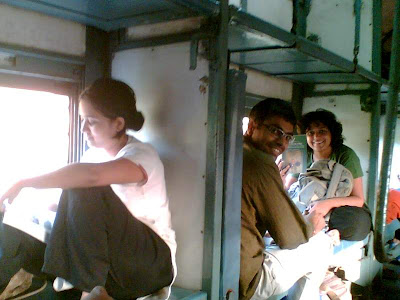.jpg)
fourth year study trip= the first of what i hope will be a recurring theme of studies for the next few years- looking at ‘second cities’. is that a derogatory term in some way. is being a first city a better state of being. not necessarily if mangalore is anything to go by. the city seems to have skipped a state of evolution; and that too the tacky apartment complexes and pwd housing of the 70s and 80s. good for it. today in between the scattered sweet houses on the sprawling hills suddenly huge new shopping complexes and hotels rise. this juxtaposition of vastly different scales even penetrated the old town. enormous malls are being built in the heart of hampangutta the old commercial center of the city. in the colonial parts of the city enormous institutions cascade down terraces towards the city. almost all of these are religious, associated with temples or churches like the spectacular st aloysius complex with its chapels interior lush with hand painted illustrations from the bible or the mission complex where the german missionaries first arrived and from all reports invented the mangalore tile.
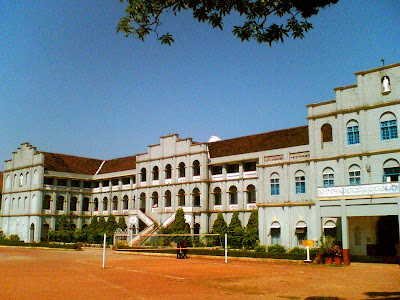.jpg)
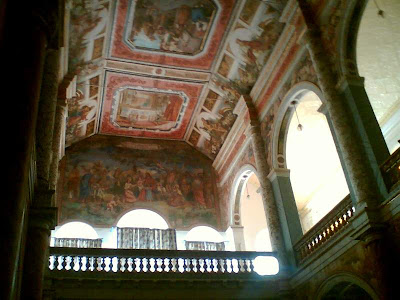.jpg)
the albuquerque tile factory is one of the few remaining working tile factories in mangalore. on the edge of the old port its skyline of brick towers can be seen from across the river. inside is a piranesian landscape of chugging conveyer belts that clink as the turn corners, rise up floors through dark narrow corridors with men working at their incessant rhythm. at the heart of this building below our feet burned the hellish fire of the kiln. this is the new factory, but seems to be on the decline because of lack of demand and raw material depletion.
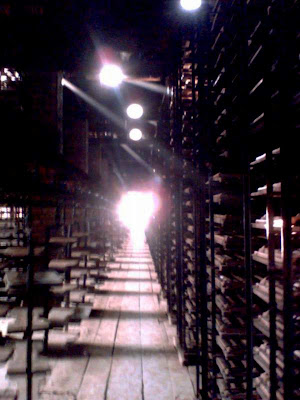.jpg)
the old docks near the tile factory teem with activity. the masts of boats cut the sky into slices and smell of fish is everywhere. ferries lead from here to an island that separates mangalore from the sea. we were warned from going here by the people we spoke to because it seemed to be a hot bed of prostitution- which means we had to go see. the other story we got from the students study was that it was once a cemetery that became inhabited by some fishermen who live there still. the beach turned out to be a desolate landscape of grainy white shell strewn strip. a thin strip in between the steep slope of the sea and an undulating landscape of green leading up to the only road bisecting the island. besides some boats being built near the jetty the only other activity seemed to be the few people walking up and down the road from the mosque to temple. men hung around in corners chatting in the little shade that they could find and the only women we saw were burkha or apron clad heading to the nursing school nearby. it seemed like a space exiled across the main city. an oddness in the air. we hear that center plans to build golf courses and entertainment complexes on it. hmm.
.jpg)
speaking of the exiled and the titillating, somewhere on the edge of the main open space in the city paras and kalpit on an evening walk found groups of men huddles in the shadow of trees- but this time they were looking for love- or at least a one night stand. mistakenly catching someones eye meant that he follow you and perform a small dance complete with swaying hips to catch your attention. they ran back to safety as soon as they could.
.jpg)
mangalore seemed to have an inordinate number of the following: educational institutions, banks and temples. the first people say is an overflow from the manipal colleges close by and because the city has such a high rate of literacy; the second because indian banking originated in this town. the temples of the city had not, as yet, fallen into the rampant commercialization that we are so used to seeing. beautifully scaled open courtyards and low hanging roofs form silent spaces that still seem part of the everyday life of people; the kadri temple in particular with its weather worn floor and its bathing pool above where young boys swam and showed us fish while a giant hanuman looked on. the gokarna temple on the other hand was a lower caste temple which had undergone a complete metamorphosis. with hordes of money coming in, it had upgraded itself with a shimmering marble floor and grotesque pouting statues of gods and giraffes into a disneyland meets tollywood set for marriages and snapshots. sometimes you thank god that some of these temple trust are not that wealthy. the temples on car street were more intimately linked with the community and were of a much smaller size. and were scattered around a fairly large chowk.
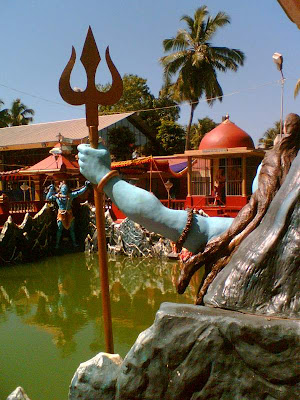.jpg)
it was near here, or actually in the markets in the hampangutta area that i got my right year also pierced, rupali her nose and kalpit gave up his piercing virginity with great trepidation and a small gold arc in his left ear. while our breakfasts and lunches were organised by the kids at hotel shamoon palace – where we were living near the railway station, lunches were where we explored mangalorean cuisine and south indian thalis.
.jpg)
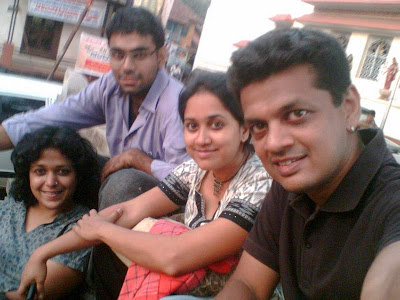.jpg)
.jpg)
one day the four of us got into a fancy four wheel drive with a drop down dvd screen and lots of music videos from kannada films and drove to meet deepika at udupi. the temple courtyard has on it the place where the masala dosa was invented and some of us bought trinkets at the brass shop. the main temple was beautiful, but we left quickly as deepika had planned a day for us where we went to the outskirts of the city looking at the town of barkur.
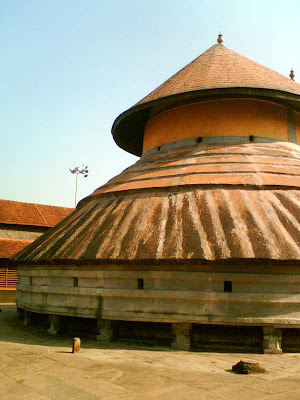.jpg)
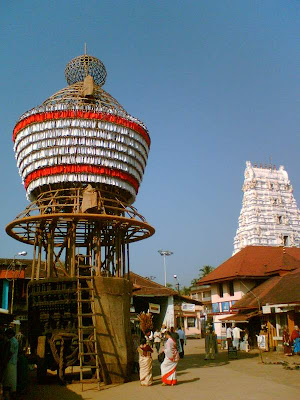.jpg)
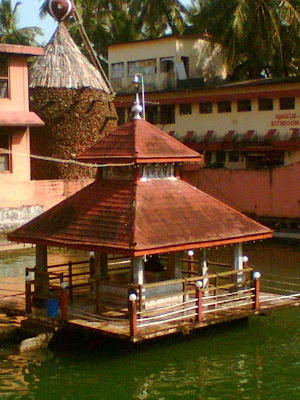.jpg)
this small village was once the seat of governance for a local dynasty. far away from the tourist or the pilgrim the sale of these and some of detail is crying out for a measured drawing project. each of these had a water body associated with them. we soaked our legs in one and the fish came and ate the particles off our feet.
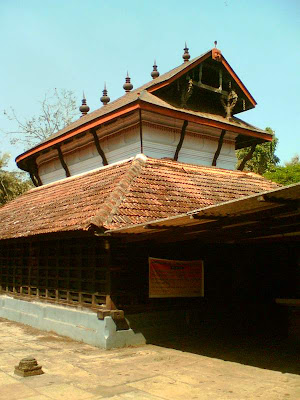.jpg)
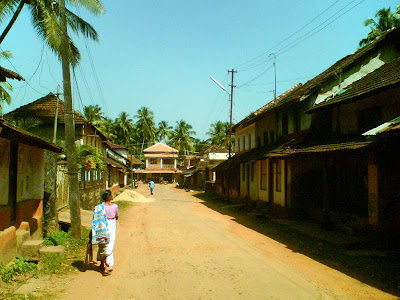.jpg)
.jpg)
besides the mainstream hinduism there is also in the area of worshipping more local nature deities or spirits- bhootagana. in the temple entered through a replica of the st louis arch were enormous wooden dolls in vermillion and gold holding daggers and decapitated heads. at the entrance of the garbhagruha a statue of a grinning monkey masturbated as devotees walked in to pay their respects.
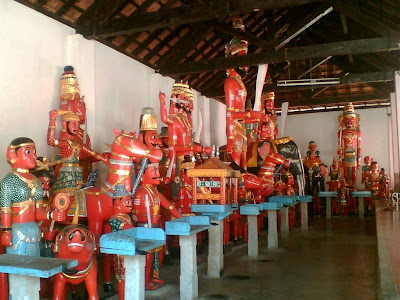.jpg)
.jpg)
.jpg)
we spent one day in the town of manipal for a jury in the fifth year studio. they were working on creating a masterplan for the tourism development of three beaches around udupi. one of them was the beach on which kalpit in his excitement over getting a group self timer picture cut his foot and had to be taken to the hospital to be bandaged. this was maravanthe - thins strip of land in between a river and the sea on which the bombay mangalore highway runs and olive turtles come to hatch. the work was unfortunately quite disappointing using present default ideas of spas and homestays unimaginatively and insensitively. but, what a surreal town manipal is. on a bald laterite hill enormous institutional complexes have transformed the town. in the middle of rural karnataka young men drive expensive motorcycles and hop down to the pub for a beer. while mangalore has not nightclub, manipal it seems has two. the air crackles with the electricity of teenage romances, unrequited love, insecurities and broken hearts.
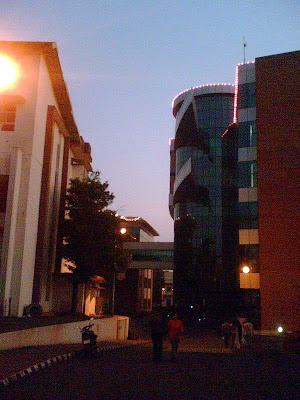.jpg)
.jpg)
we were completely pampered on this study trip. first by deepika who refused to let us pay for anything, even the delectable juicy ghee roast chicken, the kingfish and kane masala fried at the shetty lunch home in kundapur. my mouth waters thinking about it. then there was nelson who spent the whole day at manipal with us and then actually found the energy not only to take us to ‘froth on top’ an old house transformed into a cool hanging out joint in mangalore, but also to wait until 1.00 to look at the students work.
.jpg)
our study in mangalore intends to build a fictional map of the city through following 20 representative actors from beedi manufacturers to teachers to migrant laborers. the students seem to have gotten some interesting stuff and are right now on an extended trip to coorg and bangalore. hopefully the map that they build will be interesting.
on the way back before we got to the aiport we took a detour to the temple at kateel with its river, its elephant that blesses those who give it money and the dark atmpospheric smokey interior. i have a red sash rope like a slit throat across my neck and we took photographs with masks of demons from a shop on the main street. beautiful alive temple.
.jpg)
.jpg)
.jpg)
.jpg)
.jpg)
.jpg)
.jpg)
.jpg)
.jpg)
.jpg)
.jpg)
.jpg)
.jpg)
.jpg)
.jpg)
.jpg)
.jpg)
.jpg)
.jpg)
.jpg)
.jpg)
.jpg)
.jpg)
.jpg)
.jpg)
.jpg)
.jpg)
.jpg)
.jpg)
.jpg)
.jpg)
.jpg)
.jpg)
.jpg)
.jpg)
.jpg)
.jpg)
.jpg)
.jpg)
.jpg)
.jpg)
.jpg)
.jpg)
.jpg)
.jpg)
.jpg)
.jpg)
.jpg)
.jpg)
.jpg)
.jpg)
.jpg)
.jpg)
.jpg)
.jpg)
.jpg)